
| Specifications |
| Publisher: Vipanci Charitable Trust | |
| Author: R. Rangaramanuja Ayyangar | |
| Language: English | |
| Pages: 502 (4 Color and 30 B/W Illustrations) | |
| Cover: Hardcover | |
| 10.0 inch x 7.0 inch | |
| Weight 990 gm | |
| Edition: 1993 | |
| NAM601 |
| Delivery and Return Policies |
| Returns and Exchanges accepted within 7 days | |
| Free Delivery |
This is an age of Science and Technology, of the politics of pelf, power and pragmatism, of high living and plain thinking, of the apotheosis of vice and moral bankruptcy. Such crises in the past wiped out whole civilizations. History is a witness to it.
A nation lives by its art and philosophy. It withers by its arsenals of bombs and missiles “He that take the sword shall perish by it”.
The author, a rare product of the culture of East and West, has taken the sign of the times to heart and spent a whole life- time in the services of art. 1500 classical compositions representing the cream of Carnatic Music, with elaborate authentic notation, covering more than 3000 pages is the most outstanding publication in the past- Thyagaraja period of 150 years, and a tribute to the indomitable zeal, gigantic industry and invulnerable faith and optimism of a lone, solitary figure, the first musician who studied figure, the first musician who studied and published the largest number of the songs of the Trinity and other composer of the 19th century.
And now comes another of the pioneer series- A History of South Indian (Carnatic) Music- in English, a thrilling narrative of its evolution through 2500 years. A digest of all worthwhile literature, of centuries on the subject, it is an authentic reference manual of great value of students of Indian Music and Musicologists all over the world.
The delightfully readable, dignified English is an evidence of the author’s integrated culture and his capacity for clear, effective expression in a foreign tongue.
A large number of pictures in tri-colour and half-tone and useful appendices add to the worth of the book.
This book is a very brief introduction to the study of a subject of great importance to students of music in India as well as outside. Even so, this is the first attempt to present in English a short history of South Indian (Carnatic) Music from Vedic times to the present. I have always been amazed at the vast range, variety and volume of music publications in the west. Why has India nothing comparable to them?
Bharata’s Natya Sastra, Illango’s Silappadikaram and Sarngadeva’s Sangeeta Ratnakara form a triad that contain all that can be said on the subject. But most of the material in the three books remains untapped. Literal translations by scholars innocent of music are no good. Only a scientific mind free from inhibition and prejudice, competent in the theory and practice of Carnatic Music, vocal and instrumental, and well acquainted with the developments in the post- Thyagaraja period of 150 years, can interpret facts of history, correlate them with the present and also point to the future.
This book aims at little more than stimulating interest in the history of our music. It is far from adequate in quality and quantity. But its meager material renders it easy to study and assimilate its contents. It is written in English with an eye on renders outside India. It presents in a homely, Indian setting, a narrative that puts together fragments scattered in classical literature with the warp of poetry and the woof of fantasy, romance and philosophy.
To interpret an ancient system of music in a manner acceptable to current tastes and dispositions is a task that is confronted by brakes and hurdles of all short. The process of sifting grain from chaff has to keep a watchful eye on historical continuity. The nature of the subject precludes the chance of a wide circulation for the book. It is the both an advantage and a disadvantage.
Legend has played no insignificant part in shaping and popularizing the role of music in Indian culture. Nevertheless, I have taken care to keep the legendary element at its minimum. I have also tried my best to make technical matter readable and interesting to the lay sector, though the book is primarily intended as an incentive for further, more advanced study.
Many of the chapter titles are names of books well known in music literature. Their contents provide landmarks in the progress of theory and practice. Though far apart in the time and place of their appearance, they receal the continuous, organic development of Carnatic Music down through centuries. This book, therefore, is an attempt to present the story as a well- knit undivided whole, and not a summary of the various treatises.
Sanskrit words have been transliterated into English for the sake of semantic precision. As there is no agreed plan for such transliteration, an appendix with a glossary has been provided at the end along with other explanatory and illustrative data. Aspects of theory and practice have been coordinated at every step and critically examined in the light of later developments. Otherwise, the past will remain vague and unrelated to the present; the treatment, too, will be lopsided and useless for integrated study.
In the course of writing this book, a stream of misgivings was constantly flowing into my mind. I am quite aware of my total inadequacy for this stupendous work. Yet why did I take it up? What is the need for this book? Can it stimulate the long deferred endeavor to bring out an authentic, well- documented history complete in all respects- factual, statistical, illustrative, critical, etc? The magnitude and urgency of the task being what they are, will it bring together a “Brain Trust” of competent scholars dedicated to its accomplishment? Will this ancient art of unexplored dimensions and immense cultural and spiritual worth shake off its trammels and come into its own as the common heritage of all humanity? Will there be a change in attitudes and a return to old value?
The fusion of Aryan and Dravidian cultures in the South took place before the dawn of the Christian era. It wove music into the life of the community. Today, the peninsular South of India is the only region In the whole world where music is inseparable from life and literature. The evolution of Raga and Kriti, of rhythm and dance, is a fascinating story that has to be pieced together from the profuse literature of ages, particularly in Sanskrit and Tamil. Though clothed in poetry and romance, Silappadikaram is first and foremost a treatise on music. It is absolutely indispensable for a synthetic study of the art.
Personal references may not be quite in accord with conventions common to books of this kind. Till a year ago study of music was but part of my life- long search for truth. The idea of writing this book was the flash of a moment. The decision was too sudden and impulsive for objective planning and impersonal treatment. If it were not so, the last two chapters would have turned out a more palatable fare if only to compensate for the serious reading called for by the previous chapters.
The formative years of my life spent with stalwarts of the Twilight Period of Carnatic Music (1900- 1930) marked for me a non-stop pilgrimage in every sense of the term. To give only one instance, I had gone to Tiruvarur with Konnakal Pakiri who was one of the accompanists for Naina Pillay. The next morning I boarded a train for my home town. I met Semmangudi Narayanaswami Ayyar who was proceeding to Tanjore for a performance that evening. I changed my ticket and accompanied him to Tanjore.
In this manner I filled my life with music. Having drunk deep and glimpsed the vast dimensions that spread before me like a shoreless stretch of water, I entered the thirties feeling like Adam, the first man, who was bewildered by the encircling gloom as he fled hither and thither pursuing the vanishing light of day.
In the four decades since, Carnatic Music has burnt its boalts and got marooned in a trackless desert. The nature of its downfall can be realised only by those like me who were “living then” and are “living now”.
In the face of the present crisis, complacency and indifference are equally culpable of cultural homicide. Drastic measures of reform and rehabilitation demand urgent attention. This urgency is justification enough for the apparent not of pessimism and despair in the last two chapters.
Always handy are mealy mouthed, soft spoken minions, O king. Rare is he that speaks or heeds word of advice hard but sound.
All over the world, there is a growing interest in Indian music. It augurs well for all concerned. Unfortunately, agencies for instruction and exposition are deplorably out of date, inadequate and inefficient. Tinkering and amateurishness foul channels of communication. The long arm of politics and public relation, of commercialism and competition, is in league with wire- pulling and opportunism. Bluff, bluster, boost, bombast and ballyhoo- and ominous pentagon arrayed in a solid phalanx and promoting mass hysteria and careerism- corrupt popular taste and foul the atmosphere. Strong words, indeed! But too true to be denied.
A comprehensive work of this nature makes collaboration indispensable. For obvious reasons it is not to be had. Errors of commission and omission have haunted me at every turn. My faith in the cause, my devotion to the art and my absolute surrender to His Will have spurred me on and prevailed over fumbling and faltering all along.
“Oft in times of distress succor dawns from Heaven”
I began publishing music books in 1934. I have brought out sixteen books covering more than 6000 pages. “History of South Indian (Carnatic) Music” is the seventeenth. Lord low by advancing age and a number of infirmities, I still wrote the manuscript fortified by the faith that it was Providence who had always guided me and that I should not be let down if my labours merited His Grace.
As I lay in a shambles, torn and bruised, unable to lift and arm, the Good Samaritan came along. Sri Pichumani and a band of earnest, selfless knights-errant in Poona stepped in and shouldered the entire burden of printing this book.
This book is practically their gift to the world of music. The Aryabhushan Press, Poona, have shared the burden with no eye on any return but the gratitude of cultural votaries. A frail vessel of emotion that I am, I am overwhemlmed by this latest evidence of God’s grace reaching out to me through his chosen hands May I deserve it!- is my humble prayer.
If this little book lights a spark in just a few minds with awakening and generates the spirits and enthusiasm for further effort, if it calls attention to the nobles ideals of the past, my object will be fulfilled and I shall render thanks to Heaven.
In the spring of 1962, Rangaramanuja Ayyangar spent a few months in the united States, visiting a number of Universities for periods from a few days to a couple of weeks. There was one reaction common to all who had the opportunity to sit with him in close and relaxed circumstances, be it for an hour or for a week: ‘this man is a great teacher of music’.
In India, the world “teacher” is usually taken as an English equivalent for “guru”. But there is no Guru without a Sishya, and no Guru who was not once himself a sishya in some sense. A Guru is a man who has learned from somewhere, and who passes on what he has learned to others. He is part of a socio-educational chain, a Guru Sishya Parampara.
In the field of semi- improvisatory, non-ritual art music there are many possible relationships a man can have to a Parampara, both as Sishya and as Guru. There are some who appear to be middle links in the chain- they receive from a known source and transmit to a known recipient. Both the quality of what is received and the shape in which it is passed on may change under certain circumstances. A Sishya of great talent cannot help but elaborate what he has received, at least when his native capacity is greater than that of his Guru. Likewise, one does not expect a Sishya of mediocre talents to be able fully to absorb the wholeness of what may have been given him; what he passes on may well demand some elaboration and reconstruction to bring it to its original leve, even though not precisely in its original form.
There are also those who appear to stand at the beginning of a Parampara. Obviously such men will have learned the rudiments, even indeed the disciplines, of an art from someone or perhaps from many people. But whether such a man learns from essentially one source and then transmutes that one tradition so greatly as effectively to destroy it and found a new tradition, or whether he acquires his artistic raw materials from many sources and forges them into a new unity, it is his name that is remembered, and from him that the Parampara is felt to begin. Whatever the status of his immediate disciples- weak links in the chain or brilliant artists in their own right- the names of his immediate predecessors are likely to survive mainly as items of historical curiosity.
But there is a special type of Sishya/Guru who is neither a mere reflection of some one aspect of the past nor yet an iconoclast. He draws his material not from one but from many sources; making what syntheses are necessary, but yet without eclipsing their origins. Such a Guru is Rangaramanuja Ayyangar. For a period of nearly three decades, until the 1940’s he followed the activities of a large number of musician, both great and small; in the 1930’s he found one who seemed to him to come closest to being a compendium of the best that he had heard. During the years after her death he collected together in his mind all he had learned and observed, from whatever source. Some of the results of this synthesis appeared between 1947 and1953 as Kritimanimalai, a monumental one- man work by any standards anywhere.
But it is not the mere existence of this work which establishes his unique qualities as a Guru but rather what the work represents. To single out just one aspect of Rangaramanujam’a qualifications as symbolized by kritimanimalai, consider the question of his lifelong pre-occupation with niceties of notation. Now there are many people- myself included- why do not entirely share his feeling that ultra refinement of written notation is the only means for preserving the essence of the art. But one thing is evident: In order to evolve such refinements, a close and minute attention to details is necessary. And in many cases it is minute details which are most likely to be taken for granted, and then lost. Not that any single detail in itself may be much missed; but the multiplicity of details and the inter-relationship of details are what give the essential Bhava to most Ragas- not, normally, the tones of their Melakartas or the gross patterns of their Swaras. Any of Rangaramanujam’s students can vouch for his extraordinary ability to single out a small feature, demonstrate and discuss it in relation to other small features, and then fold it lovingly back into its proper context.
Such ability would of course be meaningless without the enormous knowledge of repertory and styles which Rangaramanujam has. But the combination of a knowledge of the topography of the forests with a knowledge of the anatomy of each leaf of each tree makes it possible for him to skip from Raga to Raga, from phrase to phrase, with a rapidly and iron control which never fail to astonish. And such things he never does as a tour de force but always to clarify one’s understanding. His conscious and yet inspired handling of the raw materials of music makes it possible for him to present in the simplest and most meaningful way the essence of any musical idea. And one should also mention that the same analysis of detail and synthesis of aesthetic wholes which he can make for melody is available to his students in the domain of rhythm. Though he performs only rarely on the Veena, and never now on the kanjira, he has much to offer on rhythm. He has not published much on this subject yet, but perhaps one day there will come from his hand a Laya Ratna Samudra to match the Kritimanimalai.
Though the published work has great permanent value as repository and reference, it is the man as teacher, not the man as frozen on paper, who can suggest, guide, choose, interpret, explain, evaluate and illuminate, always according to the needs, abilities and experience of the student. All who have studied with him will agree that his basic impulse is to give- to give his time, his boundless energy, his intimate and infinite understanding of the practice of music- and to communicate his love for music, his sensitivity to its greatest refinements and his belief in this endless capacity to nourish the spirit.
For Rangaranmanuja Ayyangar the years of absorbing and the years of synthesizing have come to fruition. May he henceforth have many worthy students as able and willing to receive as he is to give!
| Preface | v | |
| A grateful American student's tribute | ix | |
| Chapter | ||
| 1 | Origin of Music | 1 |
| 2 | Nadopasana | 8 |
| 3 | Indian Music Scale I | 12 |
| 4 | Indian Music Scale II | 16 |
| 5 | Natya Sastra | 20 |
| 6 | Silappadikaram | 25 |
| 7 | Sangam Literature | 35 |
| 8 | Tamil Hymns of Tevaram | 43 |
| 9 | Brihaddesi | 51 |
| 10 | Sangeeta Ratnakara I | 59 |
| 11 | Sangeeta Ratnakara II | 75 |
| 12 | Sangeeta Ratnakara III | 96 |
| 13 | Swaramelakalanidhi | 110 |
| 14 | Momentous Interlude | 120 |
| 15 | Raga Vibodha | 126 |
| 16 | Sangeeta Sudha | 139 |
| 17 | Chaturdandi Prakasika | 155 |
| 18 | The Crimson Dawn | 175 |
| 19 | The Golden Age I | 190 |
| 20 | The Golden Age II | 208 |
| 21 | The Golden Age III | 212 |
| 22 | The Golden Age IV | 219 |
| 23 | Veena | 230 |
| 24 | Rhythm | 252 |
| 25 | 1900…… | 271 |
| 26 | Epilogue | 291 |
| 27 | Classical Compositions in Sargam (Solfa) Notation | 301 |
| Appendix | ||
| I | Thumbnail Sketches | 317 |
| II | Musings of a Musician | 332 |
| III | Sanskrit Verses | 341 |
| IV | Mela Janya Ragas | 344 |
| V | Glossary | 442 |
| Press Views | 480 |
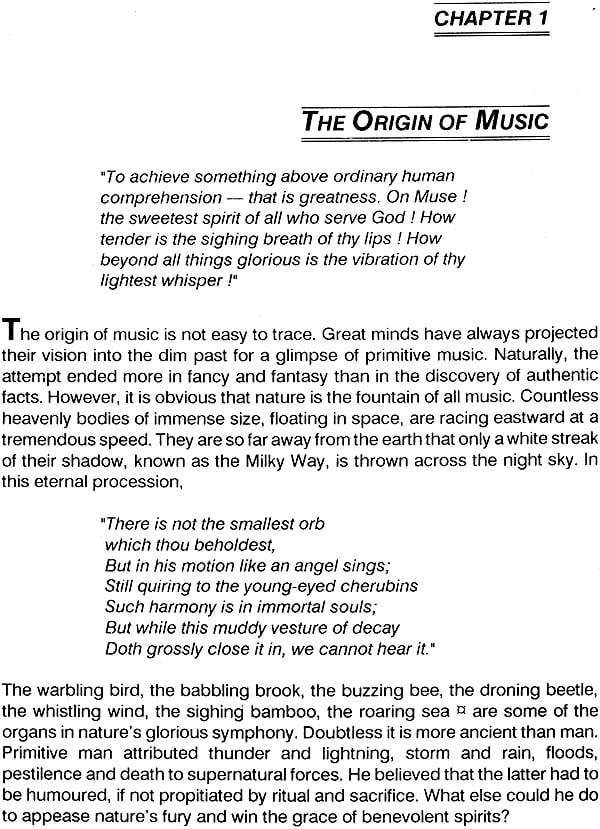
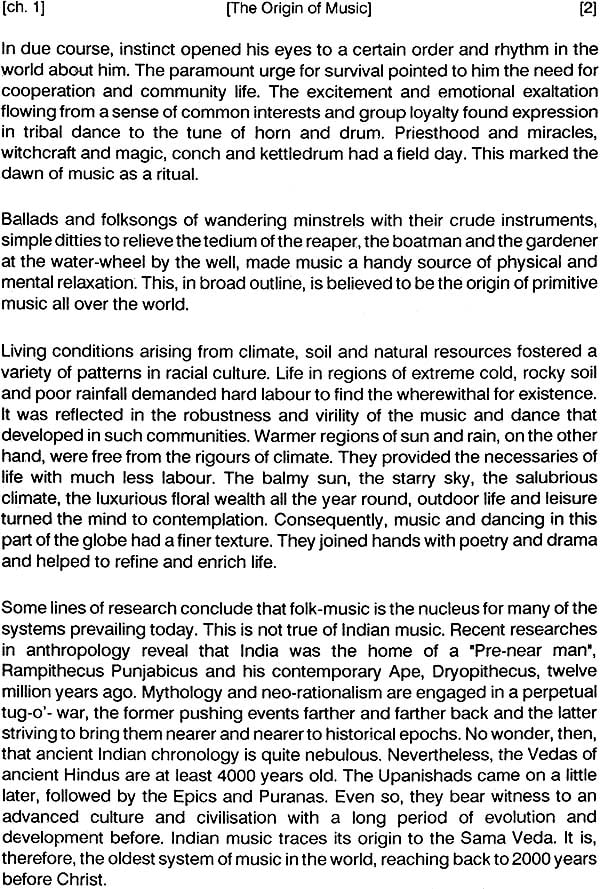
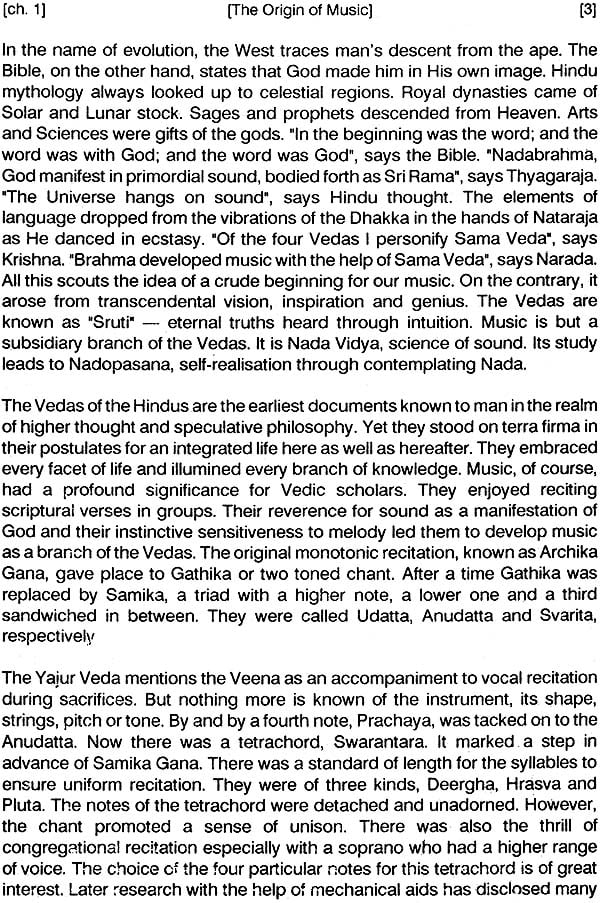
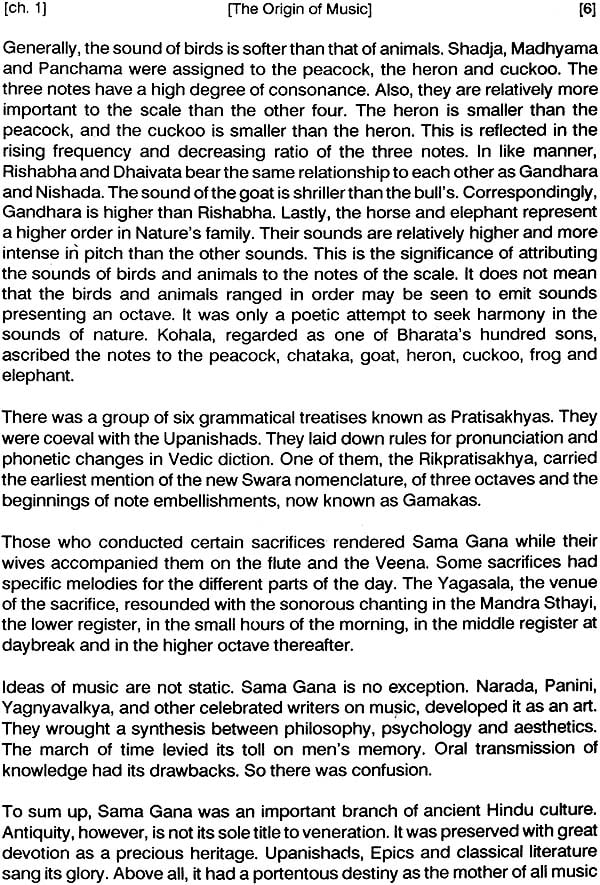

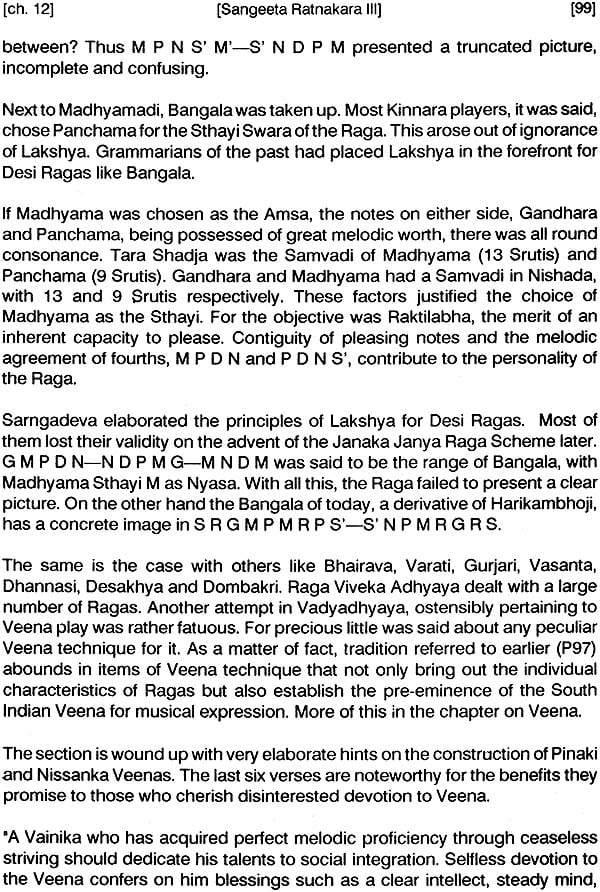
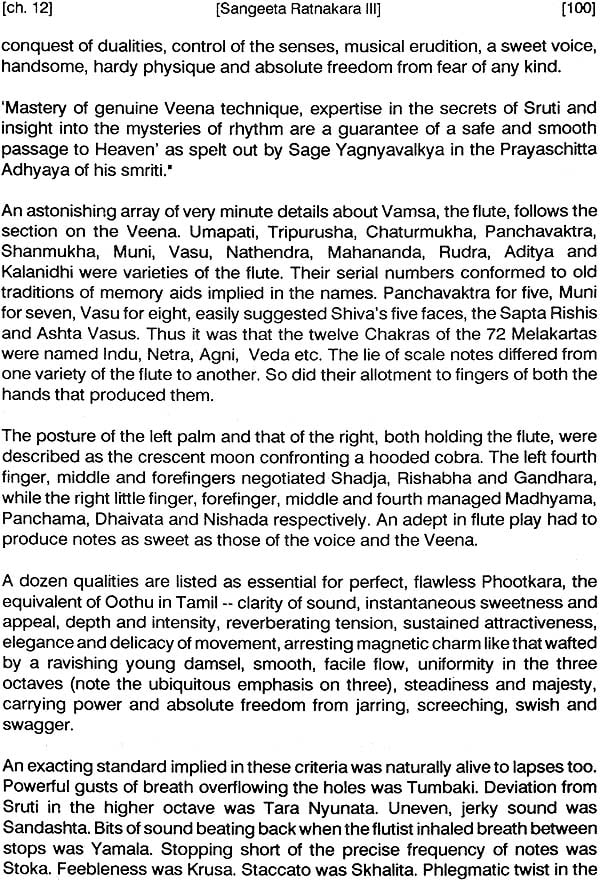
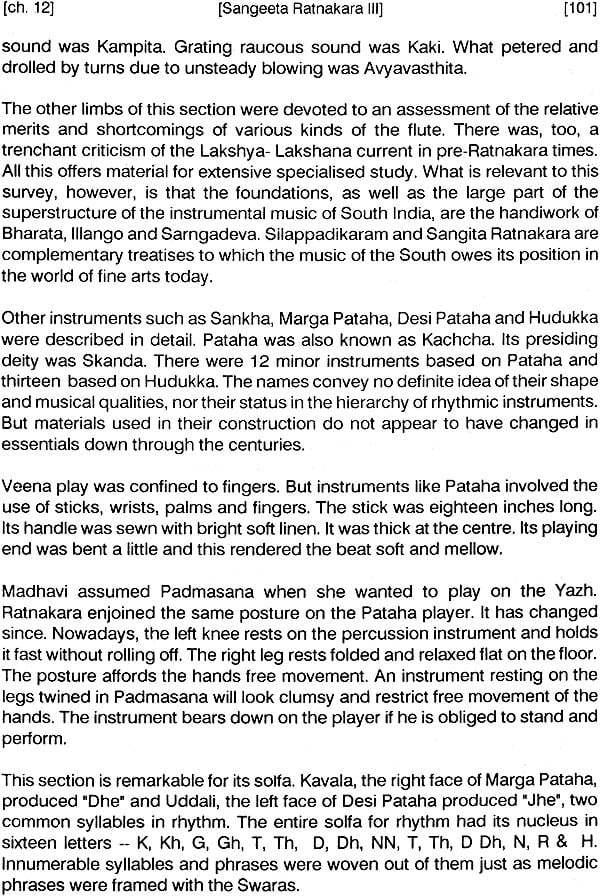
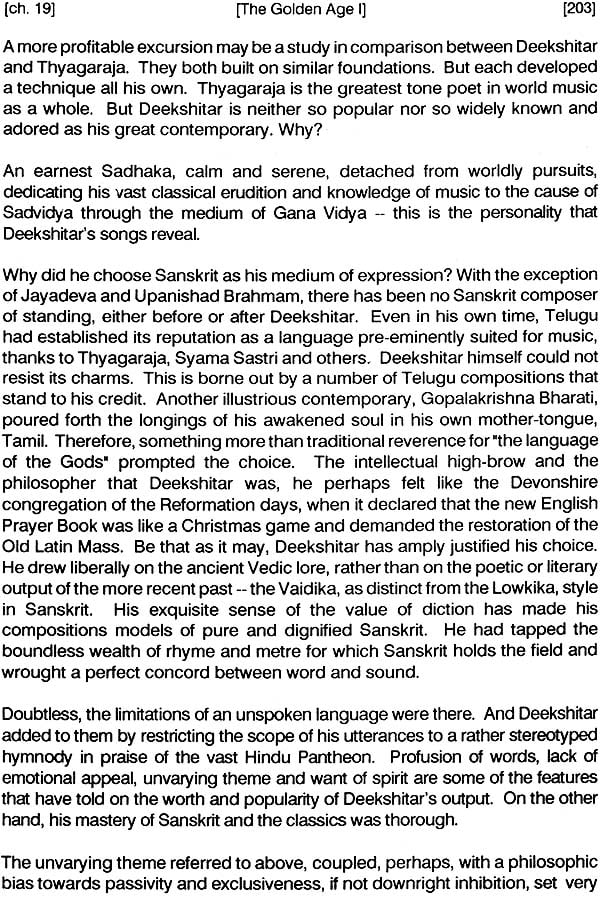
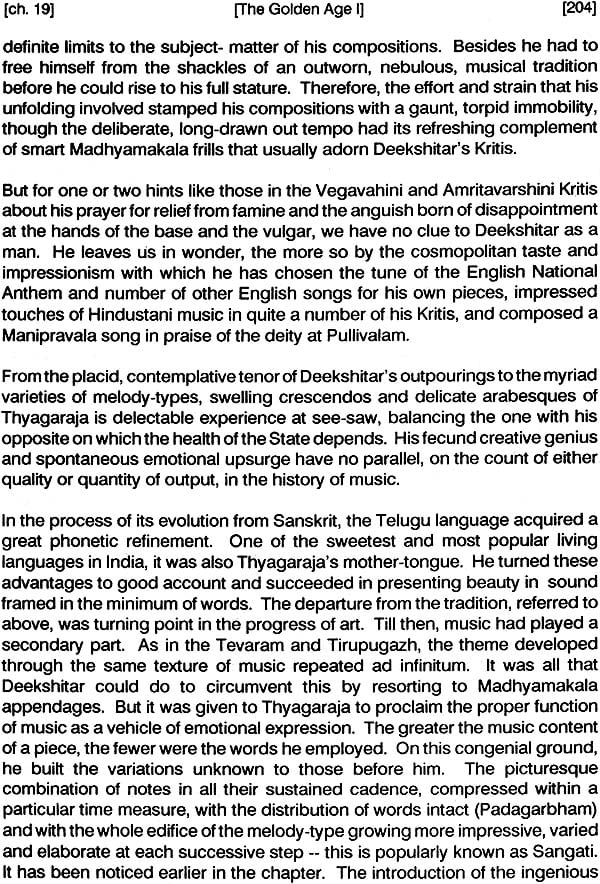
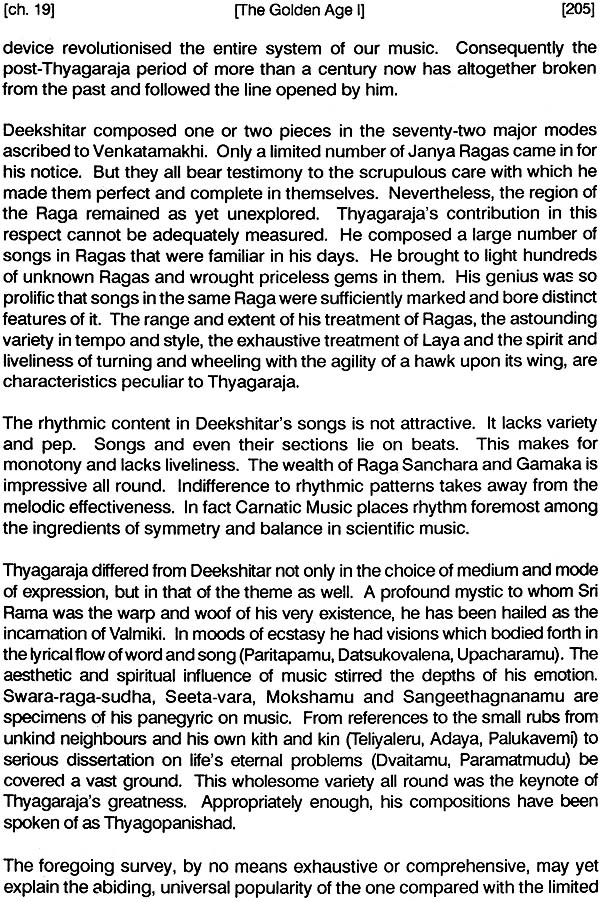
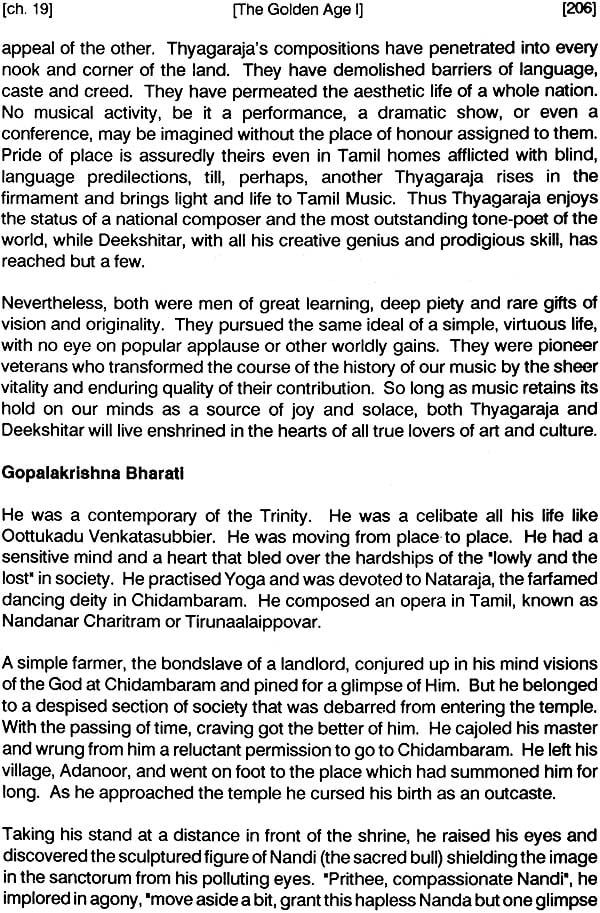

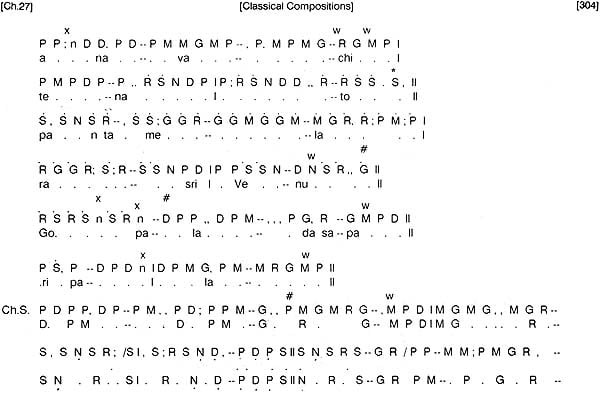
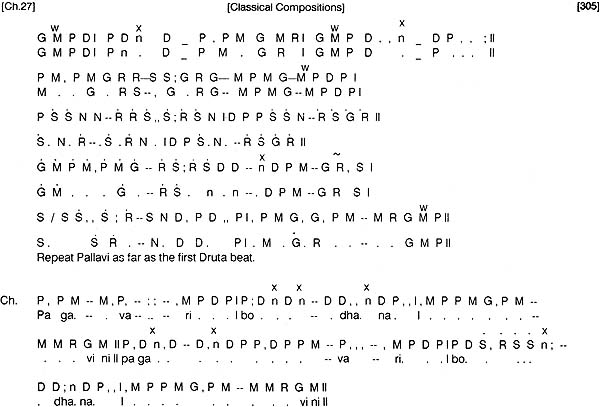
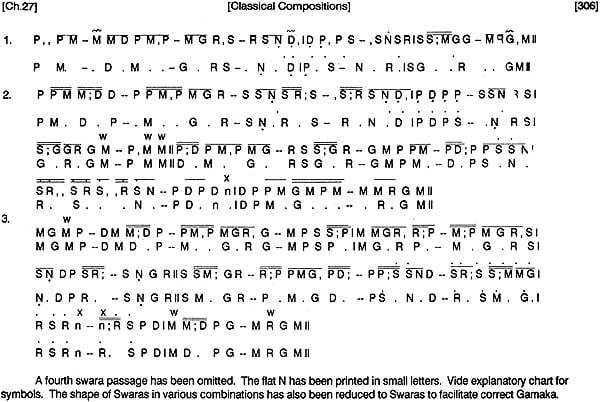
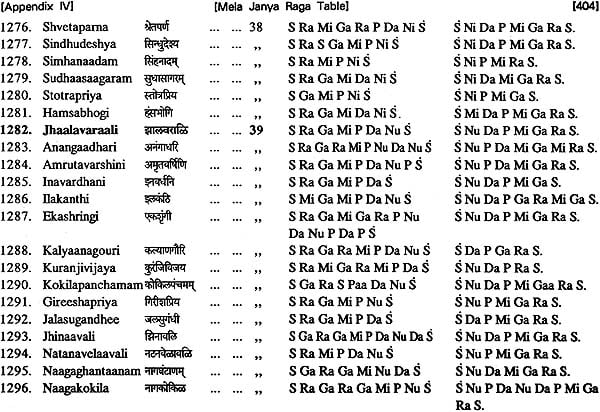
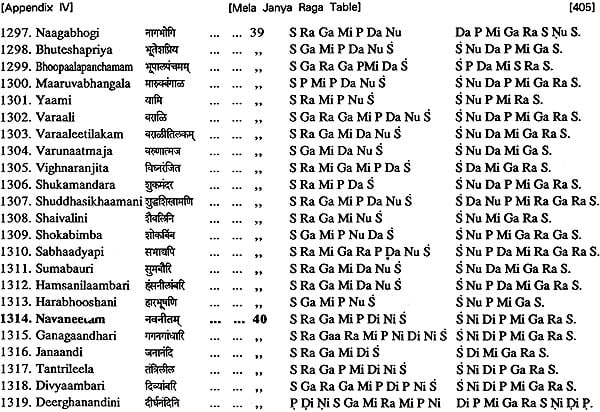
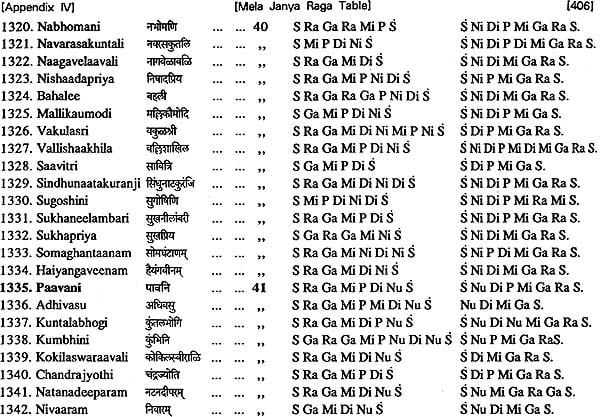
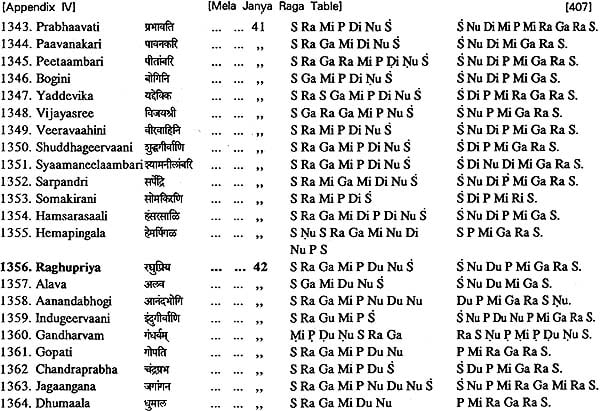
Send as free online greeting card
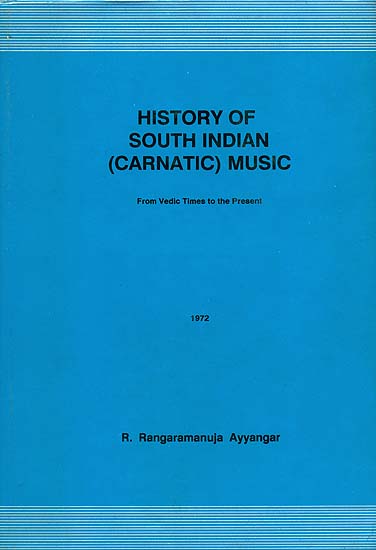
Visual Search